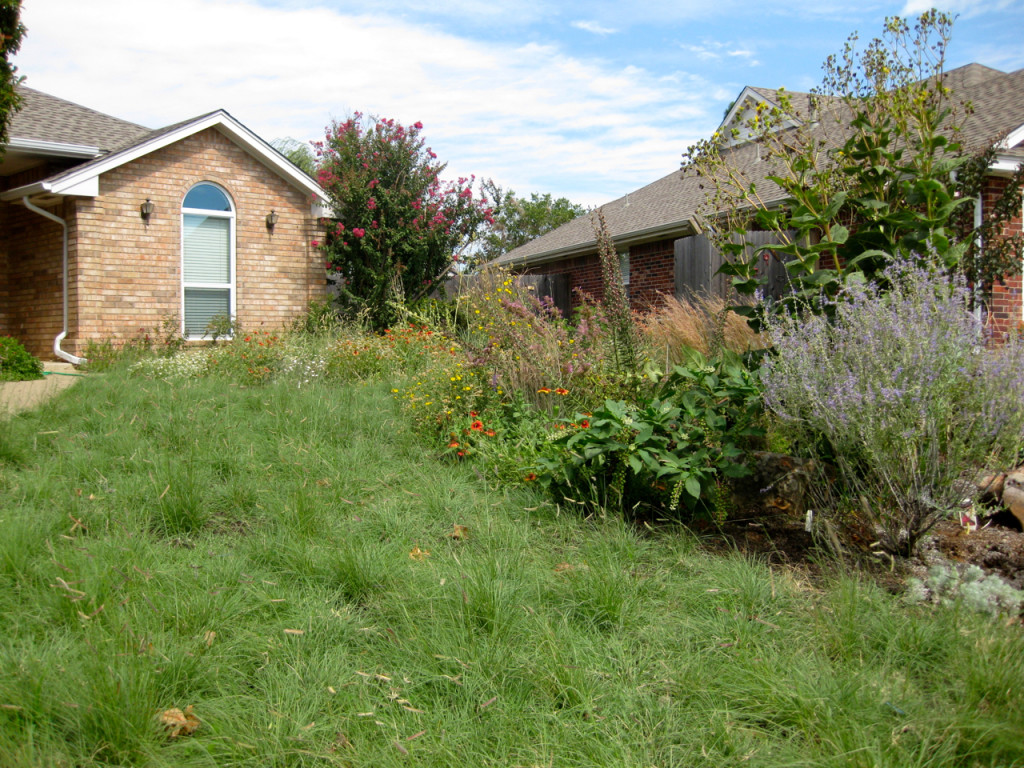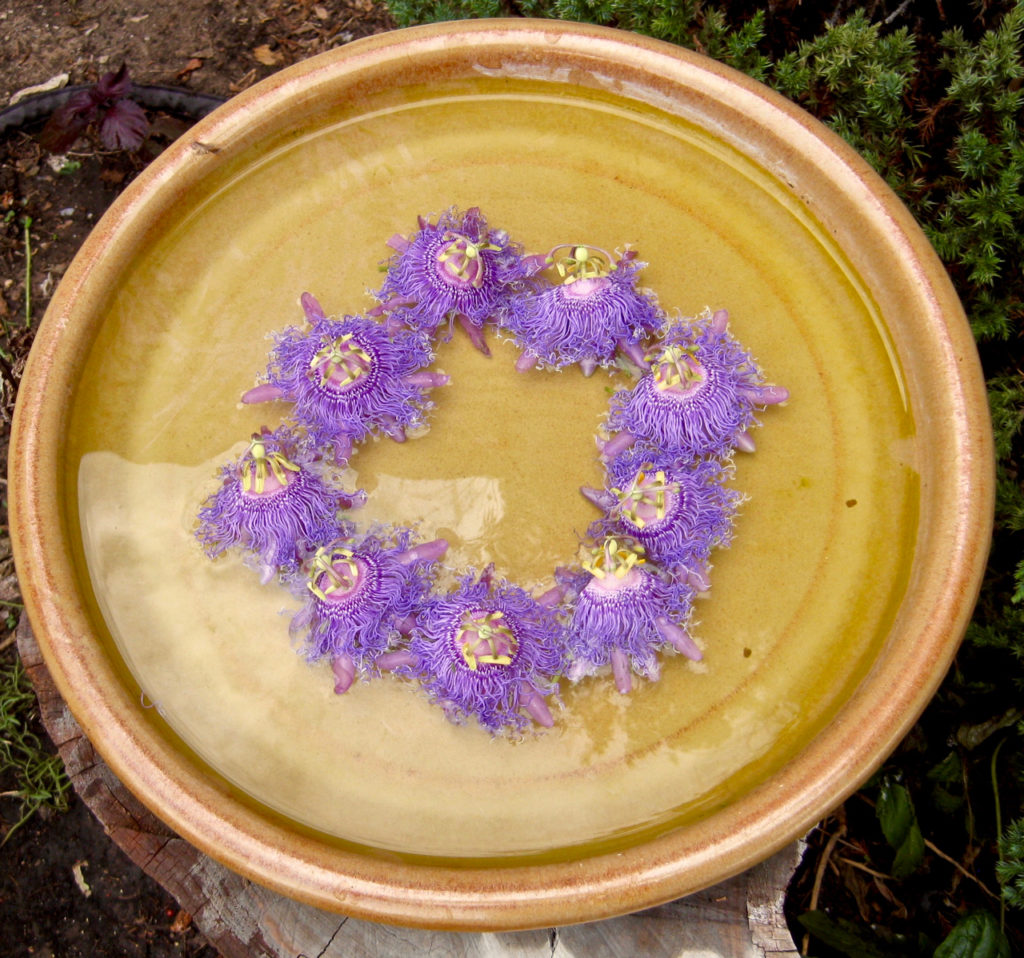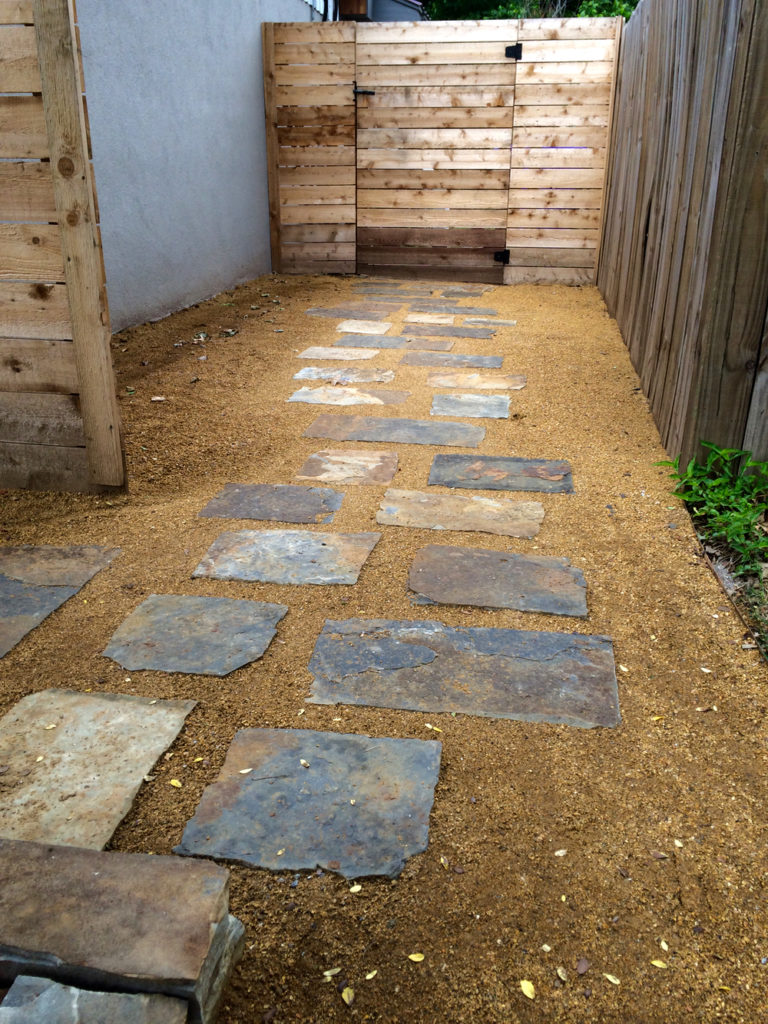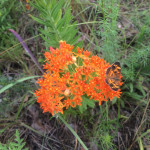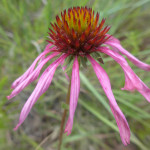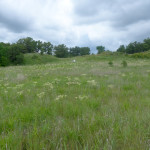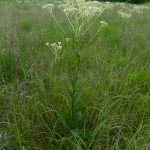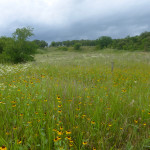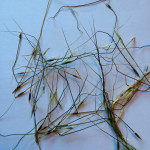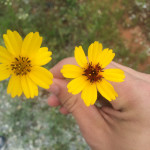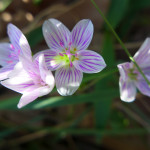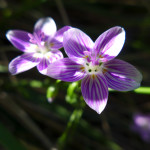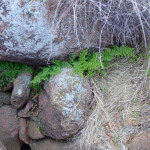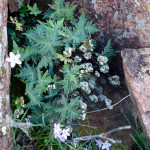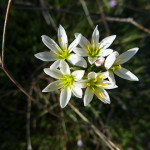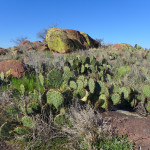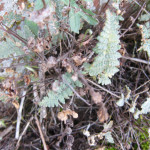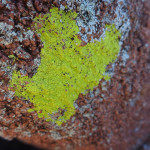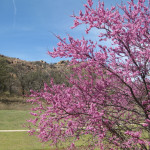Lawns…those ubiquitous constructions of man that have turned vast areas of the world into virtual green deserts and parking lots. A conservative estimate for lawns in the U.S. is 41 million acres, most of which are comprised of non native shallow rooted turf grasses that require constant mowing and provide little ecological benefit. Here in Oklahoma, the number one lawn grass is Bermuda grass. The irony of this is that Bermuda grass is one of the most invasive weeds we deal with on a day to day basis. Although it is a tough and drought tolerant plant, it’s ability to spread unchecked via rhizomes and stolons have made it a pervasive weed in the built landscape. We spend countless hours every year removing, containing, mowing and contending with this grass. Others have succinctly described the negative ecological impact of traditional lawns, but is there a way to reverse many of these negatives by simply choosing different turf grass species?
Researchers at the Ladybird Johnson Wildflower Center have delved into this question and come up with a blend of three native turf species that work together to create an adaptable, deep rooted, low-maintenance turf that can go a long way to making the lawn more ecologically beneficial. We, amongst others, have been using Buffalo Grass (Bouteloua dactyloides) as a Bermuda grass replacement and for the most part, we’re happy with the results. Using the Habiturf blend as a starting point we are exploring our own mixes of native turf and forb species to create an adaptable “Eco Lawn” for Oklahoma. In a following post, I’ll share some of our experiences with this process and give some how to advice. Here’s to a new turf paradigm!
